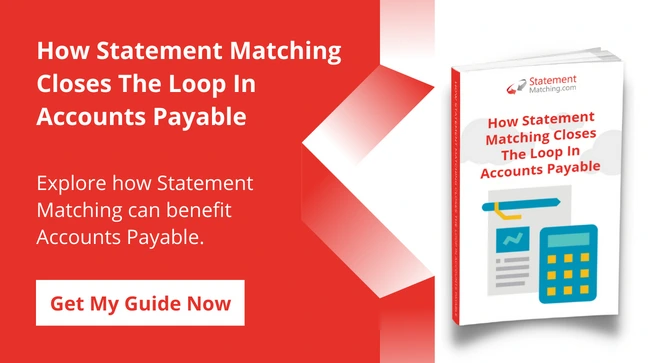With the limited resources available, Accounts Payable is largely a reactive process, with emphasis placed on processing invoices through to the payment on time. If Accounts Payable were to perform one of their key controls, supplier statement reconciliation, more proactively, then they would create a virtuous circle where issues are resolved on a timelier basis and more suppliers paid on time as a result. Improving payment on time means fewer queries, duplicates and disruption. More and more Accounts Payable Managers around the world are now prioritising supplier statement reconciliation as part of their monthly cycles and here are the five reasons why:

Payment on-time performance is a leading KPI for both Accounts Payable on the buying side and Accounts Receivable on the supplier side. Notwithstanding improving the relationship, paying suppliers on time delivers efficiencies, supports contract negotiation and minimises supply chain disruption.
Just like any other company, if a supplier isn’t paid, they will inevitably want to know why. Dealing with repeated requests for payment takes time, as does dealing with the copy invoices suppliers will send if you don’t pay them on time. In addition, a supplier that’s left unpaid for long periods of time may cause disruption by putting you on stop or even no longer wish to do business with you. Making sure that suppliers are paid on time keeps time-consuming queries to a minimum whilst maximising supplier confidence in the working relationship.
To improve the accuracy of cash flow forecasts and accruals, leading organisations will routinely reconcile their supplier accounts to identify and resolve any discrepancies between what the supplier says you owe and what the ledger is telling you. Missing invoices, miss-postings and late payments all contribute to a misleading cash flow position.
The only way to check that your supplier liabilities are 100% accurate is to reconcile supplier statements to ensure all documents have been received, posted correctly and that there are no invoices on the supplier’s account that shouldn’t be there. Accurate supplier liabilities ensure financial reporting is accurate and it’s a key control for audit and SOX compliance.
Ideally, GR/NI (Goods Received – Not Invoiced) balances should be cleared regularly and within a fairly short time span. Reducing GR-NI balances goes straight to the P&L and reconciling supplier statements supports the process by identifying those suppliers where all invoices have been processed correctly and thus any GR-NI balances can be cleared with confidence.
Get in touch to find out more about how we can help improve your Accounts Payable processing or request a live demo to see how it works!

Book a live demo to see the end-to-end processes on live customers systems and learn how easy it is to try this for free on a Proof of Concept.
Book a Live Demo to see the end-to-end processes on live customers systems and learn how easy it is to try this for free on a Proof of Concept.
